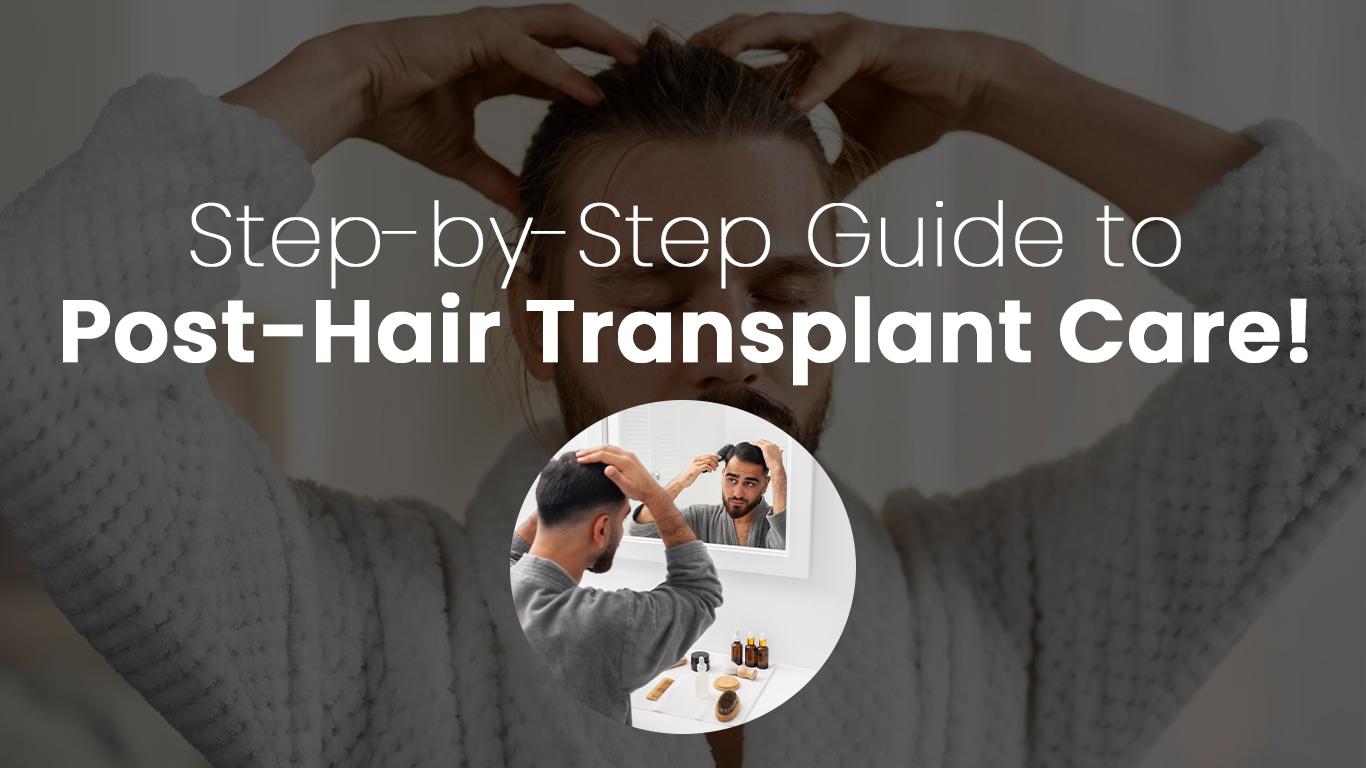
Hair transplant surgery is a significant step towards regaining your hair and confidence. Proper post-surgery care is crucial to ensure the best results. Here is a simple, step-by-step guide to help you take care of your hair and scalp after a hair transplant.
1. Immediate Aftercare
First Night
Rest and Relax: After the surgery, it's essential to rest. Your scalp will be sensitive, and you may feel some discomfort.
Head Elevation: Keep your head elevated while sleeping to reduce swelling. Use pillows to prop your head up at a 45-degree angle.
Avoid Touching: Do not touch or scratch your scalp. The transplanted area is very delicate, and touching can dislodge the grafts.
2. First Week
Cleaning and Washing
Gentle Washing: On the second or third day, you can start washing your hair. Use a gentle, sulfate-free shampoo. Mix the shampoo with water and pour it over your scalp. Rinse gently without applying direct water pressure.
No Scrubbing: Avoid scrubbing or rubbing the transplanted area. Gently pat your scalp dry with a soft towel.
Medication and Pain Management
Follow Prescriptions: Take any prescribed medications as directed by your doctor. This may include antibiotics to prevent infection and pain relievers.
Avoid Certain Medications: Do not take aspirin or any anti-inflammatory medications unless prescribed. These can thin your blood and increase the risk of bleeding.
Activity and Rest
Limited Activity: Avoid strenuous activities and exercise. In addition, this will reduce the risk of displacing implants due to excessive sweating.
Rest and Relax: Continue to rest as much as possible to allow your body to heal.
3. Second Week
Shampooing and Hair Care
Regular Washing: You can start washing your hair more regularly. Follow the same gentle washing routine.
Moisturizing: Your scalp may feel dry or itchy. Use a recommended moisturizer or lotion to keep your scalp hydrated.
Physical Activity
Light Exercise: You can begin light exercise but avoid any activities that could cause sweating or put pressure on your scalp.
Avoid Sun Exposure: Protect your scalp from direct sunlight. Wear a loose-fitting hat or use sunscreen recommended by your doctor.
4. First Month
Scab Formation and Shedding
Scab Care: Scabs may form on your scalp. Do not pick at them. They will fall off naturally.
Shedding: It’s normal for the transplanted hair to fall out. This is a natural part of the process, and new hair will grow in its place.
Hair Care Routine
Gentle Handling: Continue to handle your hair gently. Use a soft brush and avoid harsh hair products.
Conditioning: You can start using a mild conditioner to keep your hair soft and manageable.
5. Long-Term Care
Hair Growth and Expectations
Be Patient: Hair growth varies from person to person. You may start seeing new hair growth within a few months, but full results can take up to a year.
Regular Check-ups: Keep in touch with your doctor and attend follow-up appointments to monitor your progress.
Healthy Lifestyle
Balanced Diet: Eat a balanced diet rich in vitamins and minerals to support hair growth. Include foods like fruits, vegetables, lean proteins, and whole grains.
Stay Hydrated: Drink plenty of water to keep your body and scalp hydrated.
Avoiding Harmful Practices
No Smoking: Avoid smoking as it can hinder the healing process and affect hair growth.
Limit Alcohol: Reduce alcohol consumption, especially in the first few weeks, as it can interfere with the healing process.
6. Addressing Concerns
Common Issues
Itching: Mild itching is common. Use a gentle moisturizer or anti-itch lotion as recommended by your doctor.
Swelling: Some swelling around the forehead and eyes is normal. Keep your head elevated and apply cold compresses if needed.
When to Seek Help
Infection Signs: If you notice signs of infection such as excessive redness, swelling, or pus, contact your doctor immediately.
Severe Pain: If you experience severe pain that doesn’t improve with medication, seek medical advice.
7. Tips for Optimal Results
Follow Doctor’s Instructions
Customized Care: Follow all post-surgery instructions provided by your doctor . Each person’s care plan may vary.
Avoid DIY Treatments: Do not try any unapproved treatments or home remedies without consulting your doctor.
Hair Care Products
Choose Wisely: Use hair care products recommended by your doctor. Avoid harsh chemicals that can damage your scalp.
Regular Washing: Keep your scalp clean by washing regularly with a gentle shampoo.
8. Psychological Well-being
Managing Expectations
Realistic Goals: Understand that hair transplant results take time. Be patient and have realistic expectations.
Support System: Talk to friends, family, or a counselor if you feel anxious or stressed about the process.
Self-Care
Positive Mindset: Maintain a positive mindset and focus on the progress you’re making.
Relaxation Techniques: Practice relaxation techniques like deep breathing, meditation, or gentle yoga to reduce stress.
Conclusion
Caring for your hair and scalp after a hair transplant is essential for achieving the best results. Follow these steps carefully, listen to your doctor’s advice, and be patient with the process. With proper care, you can look forward to enjoying healthy, natural-looking hair.